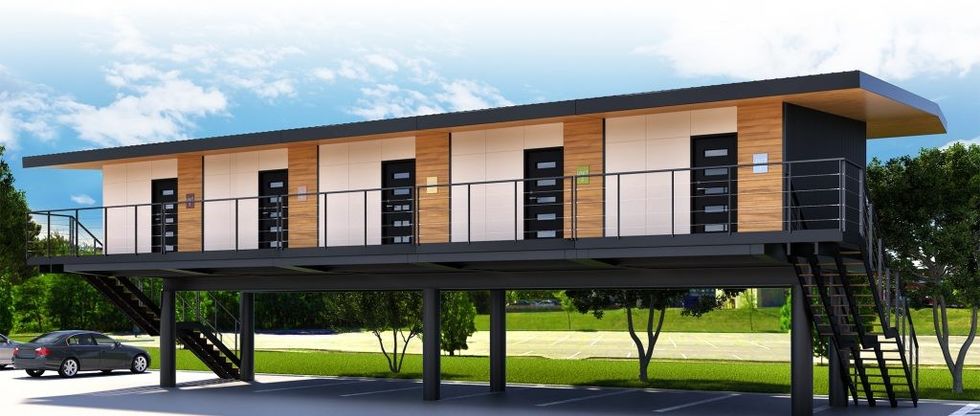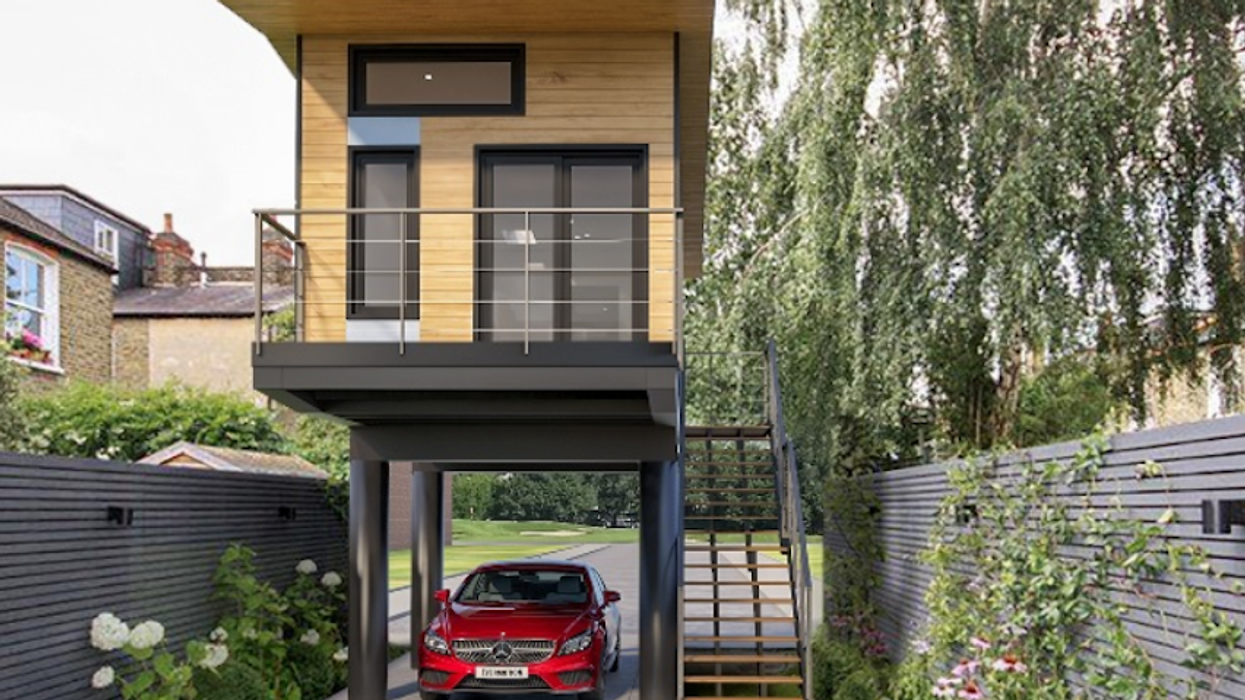A Niagara-based company is imploring Ontarians to think small when it comes to homeownership. Aloft -- the brainchild of three former Habitat for Humanity executives -- purveys prefabricated tiny housing, pointing to tiny homes as an affordable alternative for individuals and smaller family units.
Keith Gowans, the company’s president and one of its founders, says Aloft rolled out its first model in August, and the company is currently taking orders for 2023. Moving forward, Gowans and his partners have plans to bring their turnkey tiny home products to markets across southern Ontario.
“We've been engaging municipalities, government sources, planners, developers, and housing organizations,” he says. “They’re all looking for solutions to increase housing stock, and we fall into part of that solution.”
Gowans adds that Aloft focuses on infill development, making their products well-suited to cities struggling with urban sprawl.
“We're really big believers in intensifying urban cores," he says. “We started looking at parking lots because there are so many parking lots available and under-utilized, and have developed a housing system that can elevate above an existing parking space."
In addition, Aloft’s tiny homes -- and tiny homes in general -- pose a distinct financial benefit. Gowans says that compared to a commensurate living space, such as a bachelor or studio apartment, Aloft homes can be delivered for around a 15% to 20% price reduction.
And the construction process is fast.
“Once we get the permitting in place, we can install it quite quickly,” he says. The company’s fiveplex model, pictured below, can be installed in less than three weeks. “Developers and end users really liked that -- the fact that it's not a construction site for a long period of time -- and that can help to cut down on soft costs.”

While there are certainly budgetary benefits to going the tiny house route -- they also cost significantly less to heat, cool, maintain, and furnish -- Romana King, Senior Finance Editor with Finder, notes that obtaining a mortgage on a tiny home can be surprisingly challenging, not to mention more costly than you might imagine.
“Many municipalities within Canada -- and I would say across the world -- are behind the times in legally allowing the zoning of tiny homes,” she says. Without concrete zoning regulations in place for tiny homes, banks and lenders tend to look at such properties as anomalies. “They can say, ‘That's an alternative type of housing, and we don't finance for that.’ Many tiny home dwellers have to actually think outside of the box when it comes to mortgages.”
For the best chance at securing financing, King suggests going through a lender well-versed in alternative financing.
“Make a few phone calls to your bank or to your mortgage broker, and find someone who is experienced with financing a tiny home purchase," she says. "What you're going to find is that many people are not, so do a Google search to narrow down the list."
However, one thing to keep in mind with alternative lending is that your interest rate will likely be on the high side.
“Mortgages have the lowest interest rate, installment loans have the next lowest, and rotating lines of credit have the highest interest rate,” says King. “To minimize your borrowing costs, try and find a lender that will allow you to negotiate an installment loan."
King also suggests looking into RV financing, which is something mainstream borrowers are more likely to offer. However, an RV loan only applies to tiny homes with the ability to be mobile -- for instance, ones built on a trailer base. Another option: work with a tiny home builder that has an associated financing department -- "and that would work much like accessing a conventional mortgage,” says King.
Because of the legwork involved, King recommends looking into lending options before or in tandem with house-hunting. And the same goes for insuring a tiny home.
“Definitely shop around while you're considering purchasing or building so you understand the requirements of the company or broker you're working with,” says Kelsey Hawke, an insurance expert with RATESDOTCA. “The insurer may need photos or building plans, and you have to be prepared to provide those things.”
And much like lenders, insurance providers will hold a tiny home to a different standard than they would a conventional home.
“Certain insurance companies have guidelines when it comes to the nature of the home. If it's something constructed on the spot, it's a little bit easier to obtain insurance coverage. If it's a modular home or something that's mobile, it's more difficult just because some insurance companies may treat it like a mobile home while others treat it like an RV,” says Hawke. “And then if something is potentially mobile, it can be subject to additional types of damage. In a wind storm, for example, it could potentially be blown away.”
Another consideration extends to the size of the home itself. For a tiny home, something like a fire could result in a total loss of property.
“Because of the risks, insurance often tends to be more expensive for a tiny home than it would be for a conventional home,” says Hawke. “Consumers can be shocked at the price.”
She adds that some companies may deny coverage based on square footage alone.
“It really helps to work with a broker that has access to more markets, and that way they can shop around for the client,” says Hawke. “Tiny homes are definitely a financially feasible option, but people just have to take into consideration that insurance is not going to be as easy to secure as it would be for a conventional home."
Cover photo via Aloft Housing.


















